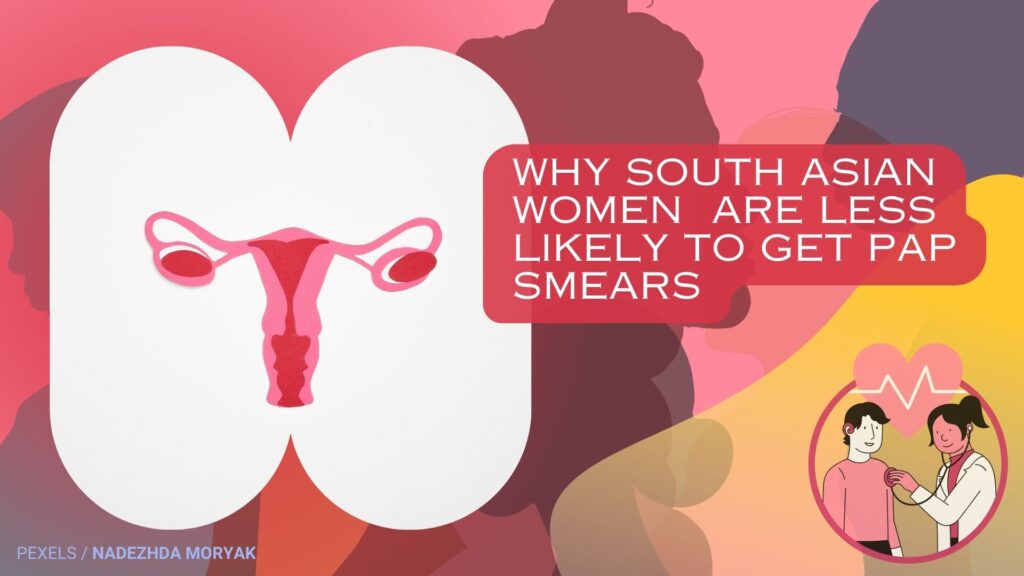
Listen to the full story here:
Cervical cancer is highly curable when detected early, but South Asian immigrant women are less likely to get a pap smear in Ontario due to cultural and social factors like believing that it marks them as sexually promiscuous.
In Ontario, South Asian women are 39 per cent less likely to undergo cervical screening compared to non-immigrant women. Other research shows that 47 per cent of immigrant women, in general, were overdue for a pap test.
Mireille Cheung, director of community health at the Flemingdon Health Centre, said age, cultural beliefs, and “misconceptions around marital status,” all contribute to the low rate of pap tests among South Asian women. The marriage misconception, she said, is that South Asian women presumably do not have sex before marriage and therefore don’t need a pap test until they have husbands. In fact, doctors recommend regular cervical cancer screening for women, regardless of their sexual history.
Cheung said that women often have to “jump through many hoops” to get procedures like a pap smear done because they do not want their families to know.
A Papanicolaou test (more commonly known as a pap smear) helps detect human papillomavirus (HPV), which is a leading cause of cervical cancer.
Cecilia Van Hollen, the author of Cancer and the Kali Yuga and a professor of Asian Studies at Georgetown University, in Washington, D.C, said in an interview that women with cervical cancer often worry about being perceived as “immoral and bad women.”
Kripa Sekhar, executive director of South Asian Women’s Centre, a non-profit organization in Toronto, said that South Asian women are more reluctant to go for a pap smear done “because they don’t want their parents to know why they’re going or if their parents are taking them they may not want them to know what’s happening,”
South Asian women, Sekhar added, are more prone to go to a gynecologist if they have a female doctor and are from the same community. “They’ve grown up in communities where they’ve been socialized to be modest, to say the least,” Sekhar said, noting that there is a lack of conversation around pap smears in Canada.
“There is no real educational information, particularly language-friendly educational information, where women can find out more about why they need to do this [get a pap smear],” she said.
Sekhar said the South Asian Women’s Centre often brings in a nurse or an expert to talk to women in their community about reproductive health.
OTR approached more than a dozen South Asian women of various ages for comment and encountered widespread reluctance to discuss the topic.
Dr. Kirsten Smith, the colposcopy and the pap smear lead at North York General, agrees that having a female provider helps create a positive and safe environment. “[A pap test] doesn’t take long to do, usually less than a minute, to do the actual test. It may be associated with brief discomfort, but it’s usually not painful,” Smith added.
Dr. Diane Francoeur, chief executive officer of The Society of Obstetricians and Gynaecologists of Canada said the pap test can be especially traumatizing for women who have been sexually abused.
“When it’s time to do the pelvic exam, it kind of triggers the fear and the shame and the discomfort and all the trauma,” she said. “[This] is one of the reasons why women (in general) don’t want to talk or don’t want to even see a gynecologist unless they have big problems.”
Although cervical cancer is highly preventable, the Canadian Cancer Society predicted that 1,550 Canadians would be diagnosed with the condition in 2023, and 400 women would die from it. It is the ninth leading cause of cancer in women and, Francoeur observed that it is a “really bad one” to get.
“The only way you can treat it is to have radiation therapy, and sometimes chemo or very extensive surgery,” she said, noting that cervical cancer usually affects women in their 40s and 50s, and it tends to destroy their sex life.
Despite the 3.7 per cent increase in the number of cervical cancer cases every year since 2015, The Canadian Partnership Against Cancer aims to eliminate disease in Canada by 2040.
The odds of that happening have improved because recent innovations mean women can screen for the HPV virus – the leading cause of cervical cancer – from the comfort of their homes.
“We are at the edge of having the HPV screening that everyone’s going to be able to do,” Francoeur said “It’s going to be like (using) a tampon, and you read the instructions and send it back [to a health care provider].”
As of January, only British Columbia has implemented an at-home cervical screening, but Francoeur says that all provinces are working on implementation.
OTR reached out to Ontario Health regarding the rollout of at-home cervical screening tests in Ontario but received no response.

Ishitaa Chopra is a fourth-year journalism student and a storyteller for On The Record, winter 2024.

